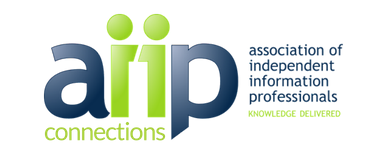Showing, Not Telling, What You Do

AIIP recently hosted a webinar on how to build your word-of-mouth referral network (members may see the recording), and it got me thinking about the importance of finding effective ways to let people know what you do without sounding like a talking billboard.
Just as fiction writers are advised to “show, don’t tell — let the story emerge through actions and thoughts rather than by the author’s description — so infopreneurs need to demonstrate what we bring to our clients, rather than simply talking about our expertise.
Following are some of the organic approaches I have seen to be effective in becoming known in your field.
See yourself as a thought leader and watch for opportunities to share your perspective. Monitor the news in your market’s areas of interest for stories that are provocative, innovative, or unexpected. When you find something, take time to write up a few paragraphs about what this story means to your market or why you think it’s particularly interesting. Post your thoughts on social media and your blog, and be sure to respond to any comments. Make this a regular habit; at least once a month have something interesting to share with your market. You are demonstrating that you are watching the trends that matter to your clients and that you are generous with your observations and insights.
Identify an ongoing concern of your market and create a report that addresses that concern. For example, I was targeting online content vendors and knew that they wanted to better understand how corporate information managers approach digital content licensing. I conducted an anonymous flash survey of corporate library managers asking for their content evaluation criteria, what their biggest concern was, and what they wished the online vendors knew. The resulting report helped establish my reputation among my market that I understand their clients and could be a valuable partner.
Get multiple uses out of speaking opportunities. Now that conferences have all shifted to a virtual format without the need to travel, lining up public speaking engagements has become more feasible. After your talk, repurpose the content into a blog post; share your slide deck on SlideShare, your web site, and social media; reach out to organizations your clients belong to and offer to give a webinar on the topic for that group. And if you’re hesitating to share your slides for fear that someone else will use them, let that concern go. By being generous with your content, you show that you are more than a few good ideas and that what your clients are paying you for is significantly more valuable than what you give away.
Affirmatively reach out to people with whom you want to connect. I often see people send a chat during a virtual event saying “Hi, everyone – please connect with me on LinkedIn” and I wince. This kind of message demonstrates a lack of respect for others’ time; instead, if you want to connect with people you interact with during a virtual event, note their name and head over to LinkedIn to look them up and send a personal invitation asking to link.
An unexpected benefit of these approaches to building your word-of-mouth referral network is that the more you authentically show who you are and how you operate, the more you attract the kinds of clients with whom you enjoy working.
Mary Ellen Bates has been an infopreneur since 1991, providing business analysis for strategic decision-makers and consulting services to the information industry. Her passion projects are beekeeping and coaching new and long-time infopreneurs. See more at BatesInfo.com.





